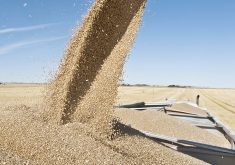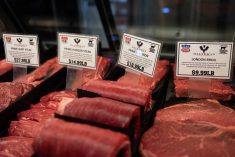Most agricultural commodity prices retreated again last week.
There were no widespread, yield-robbing weather problems in North America.
Oilseeds in particular fell, led by soybeans. While prospects for a large soybean harvest had weakened November futures prices for some time, cash and nearby futures had been supported by tight end-of-season supplies that had crushers coaxing farmers to deliver with exceptionally strong basis bids.
But basis started to collapse last week when crushers believed they would be able to survive until the first new beans are harvested in the south in about three weeks.
Read Also

Soybean market still figuring out implications of China-U.S. pact
Soybean futures had a muted reaction to the U.S. trade deal with China as the market tries to figure out the nuances of the deal.
That undermined nearby futures that were also pressured by slow exports, weak soymeal demand and prospects for a large crop. Canola could not escape the falling oilseed market.
Canadian farmgate prices were also weakened as the Canadian dollar’s rise against the American dollar took a steeper ascent. The loonie jumped higher because the U.S. inflation rate for June came in lower than expected, leading to expectations that the Federal Reserve will not raise interest rates soon because there is no need yet to rein in an overheated economy.
The prospect of more months of low U.S. interest rates weakened the greenback relative to other currencies, including Canada’s.
Livestock markets
In livestock markets, hog prices, cash and futures, fell sharply.
After a spring and early summer of surprisingly strong hog prices, helped by good domestic and export demand for pork, market sentiment seems to have shifted.
There is a large supply of hogs and U.S. slaughter is running at a record pace for July. That is generating lots of pork at a point in the summer when demand starts to wane.
The weaker cash market pushed the futures market down to the point that sell stops were triggered, forcing prices down the limit July 15.
Also weighing on hog futures was the news that Japan is reconsidering the need to test all cattle for BSE before slaughter.
Japan’s Food Safety Commission said exempting young cattle from the test requirement would pose little risk to humans so long as specified risk material is kept out of the food chain. The report is separate from the formal Japan-U.S. discussions regarding beef trade, but traders think it marks a softening in Japan’s attitude that will eventually lead to resumed trade.
Pork has benefited from the restrictions on beef exports because Japan has increased imports of North American pork to make up for some of the shortfall in red meat.
If beef trade resumes, pork trade may be reduced, traders reasoned.
Feedlot backup
The news from Japan should have been good for U.S. cattle futures, but it was outweighed by evidence that cattle are starting to back up in feedlots as beef demand weakens seasonally.
However, in Canada, it seems feedlots are current.
Canfax said carcass weights in late 2003 and early 2004 were significantly heavier than normal, posting new all-time highs. But weights have been declining, falling 54 lb. since the start of the year.
Current steer weights of 811 lb. are four lb. under what they were last year and are similar to 2001 and 2002. The five-year average is 805 lb.
Weights normally bottom in April and trend heavier into the fall, but this year, weights have not turned higher yet and have dropped consistently into July. This would indicate cattle in the slaughter queue are current, Canfax said.














